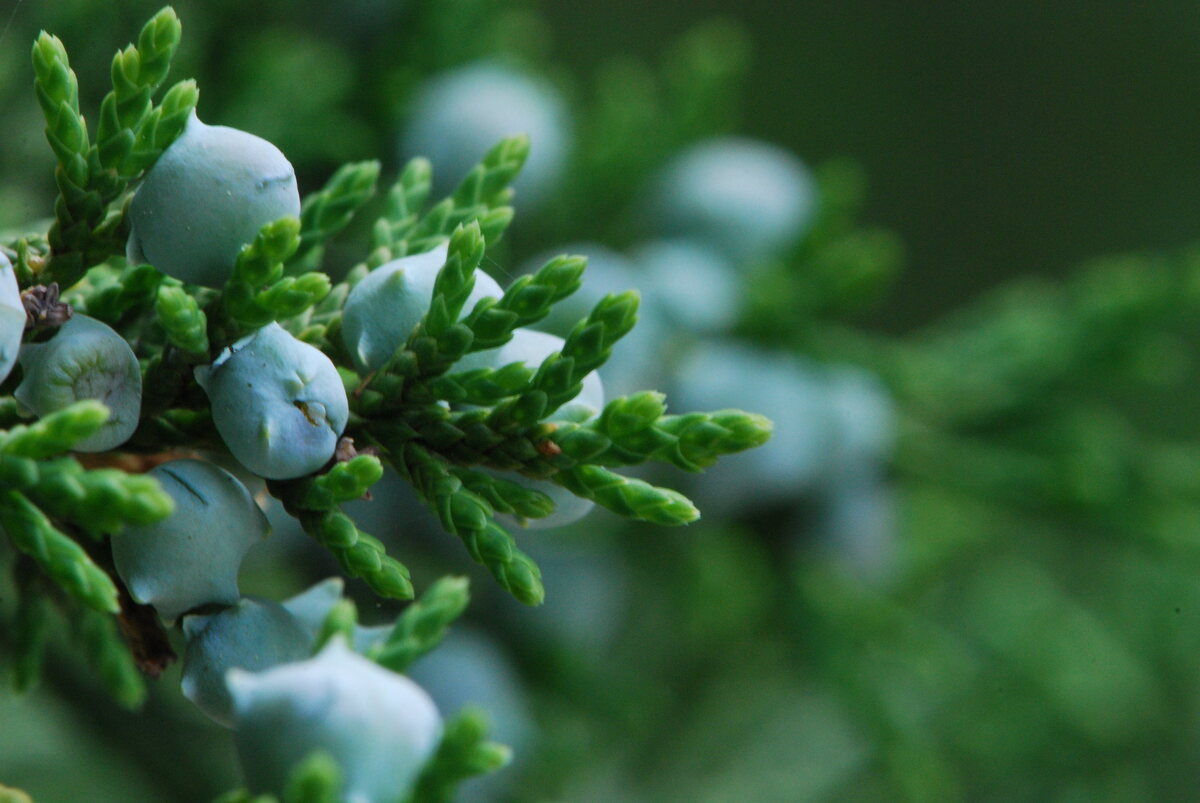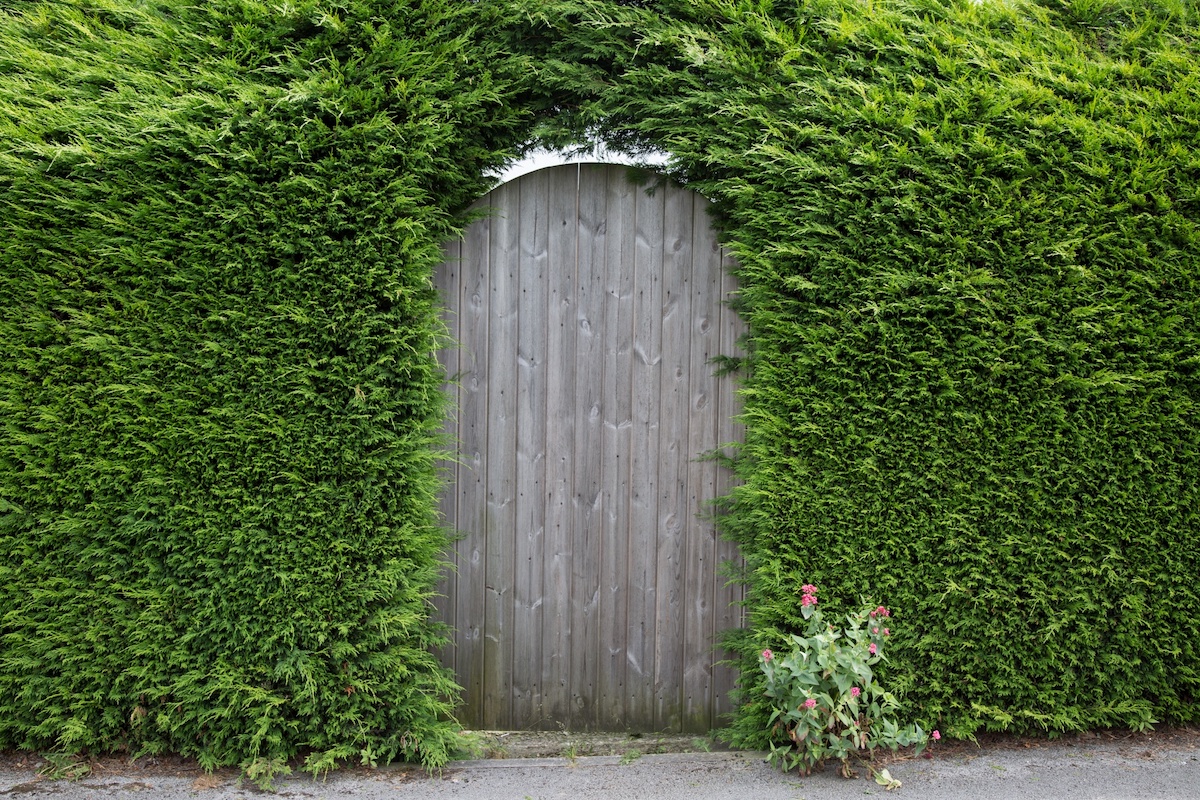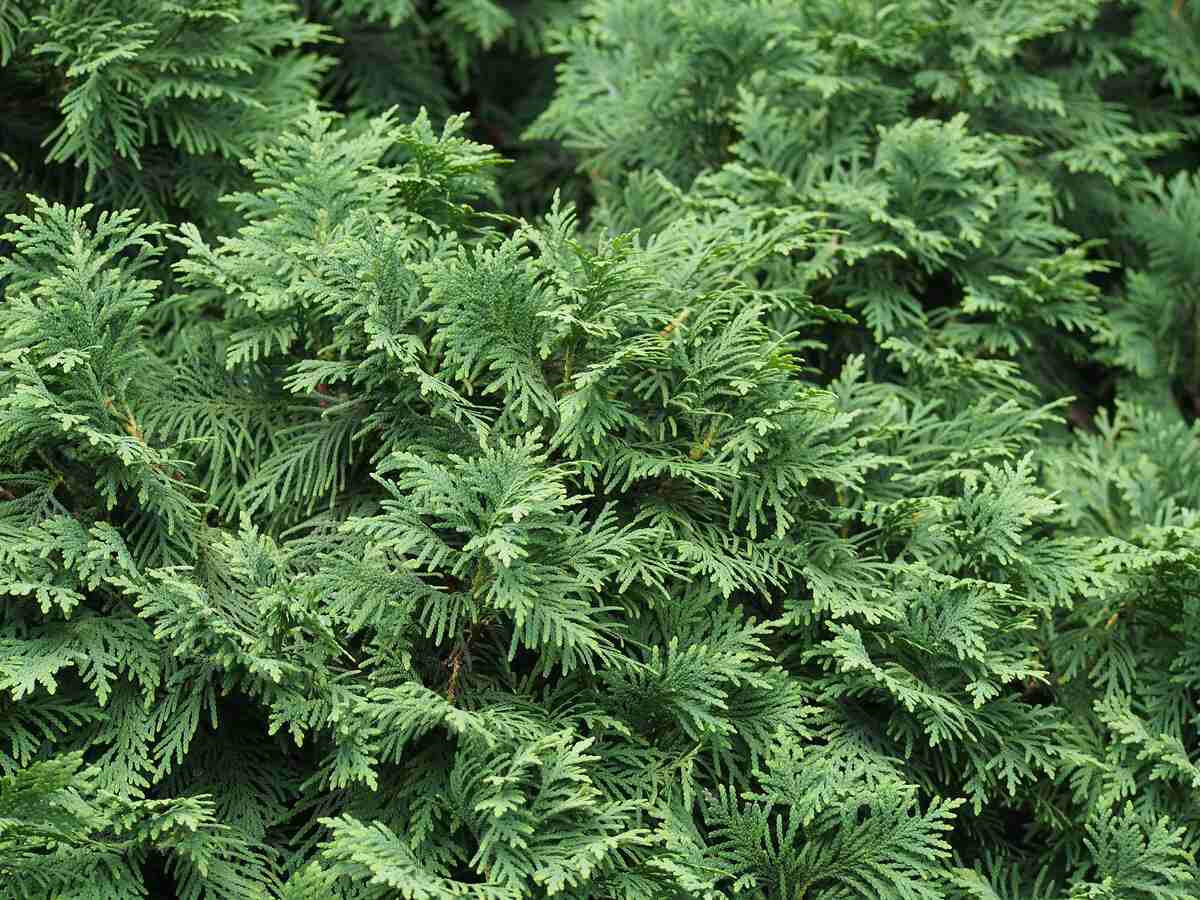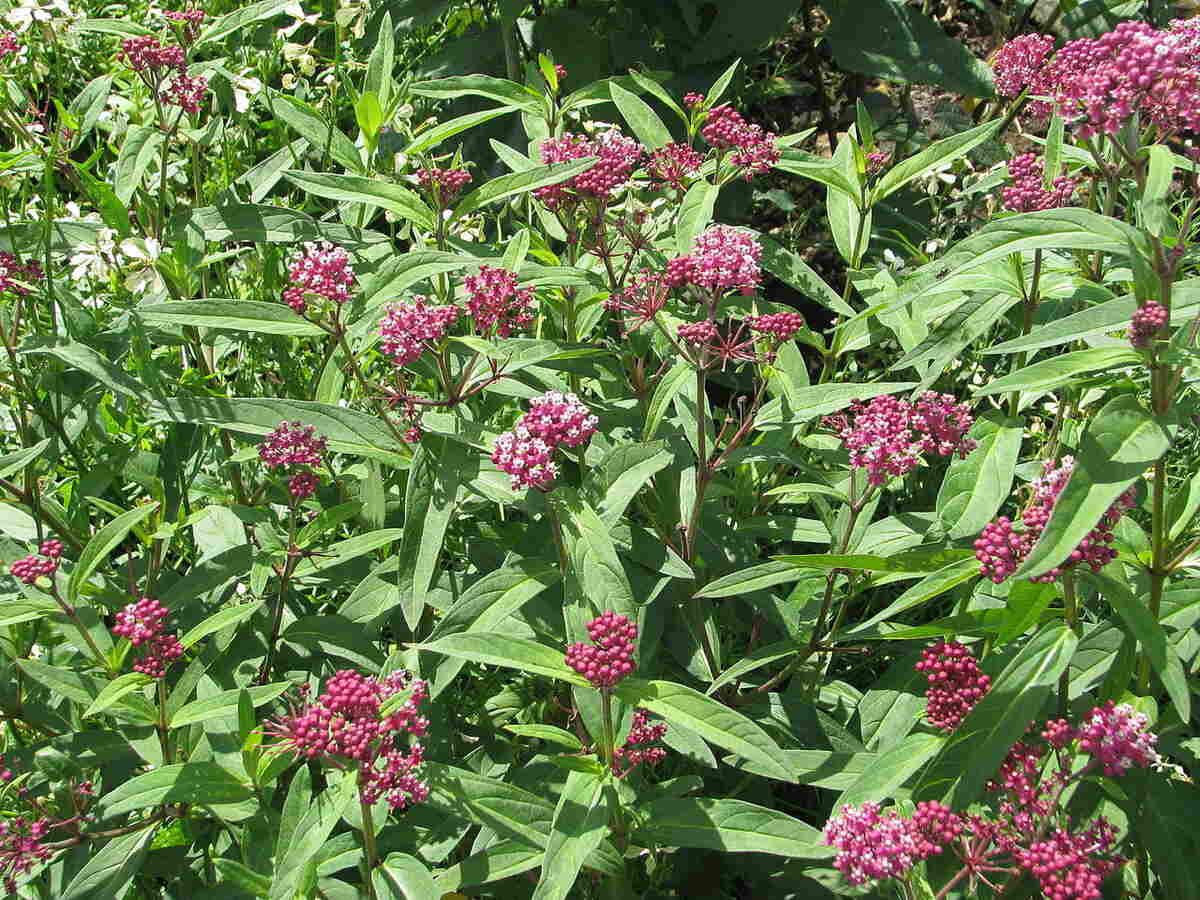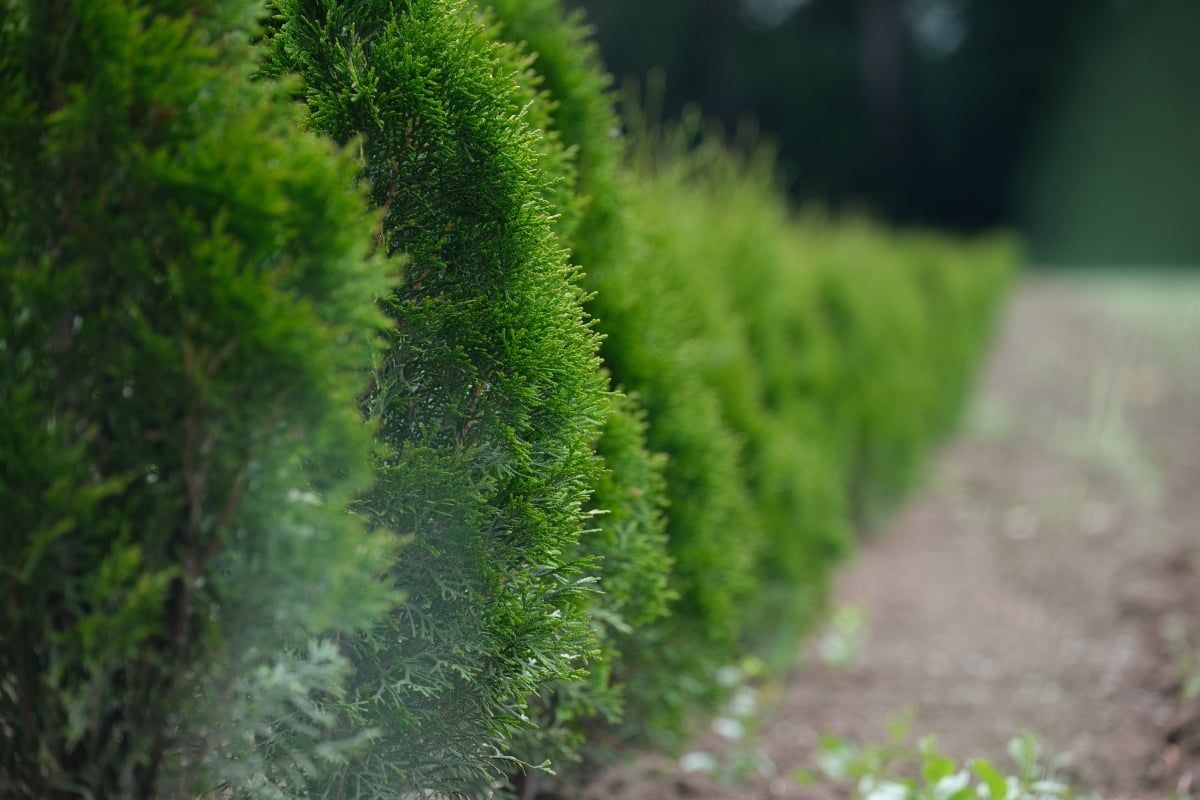
They’re lovely people, really, but your neighbors don’t need to know everything that takes place on your side of the property line. Create some much-needed privacy between the homes in your neighborhood — and any nearby commercial or high-traffic areas, too — with trees.
Not only do these trees act as natural screens that hide things from view, but they also help block noise pollution and wind.
Experts suggest mixing varieties for the most optimal outcome, so to get you started, we’ve rounded up 15 of the best trees for privacy to plant in your yard.
15 Best Trees For Privacy
1. “Green Giant” arborvitae
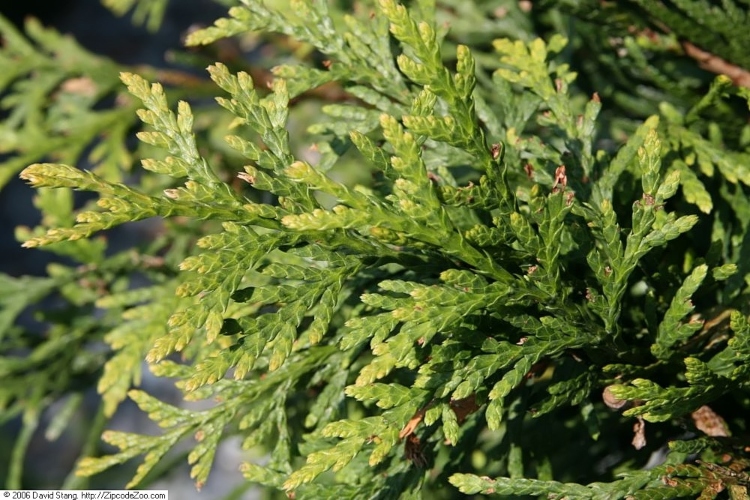
Advantages:
- Pyramidal shape has dense foliage
- Great for a natural windbreak
- Low maintenance (pruning is rarely required)
- Diseases and pests pose no problems
- Deer-resistant
- Holds up well with ice and snow
- Gives off pleasant smell when green leaves are squeezed
Growth rate: Fast. The “Green Giant” arborvitae, aka thuja green giant, can grow up to 3 feet each year until it reaches its mature height of 50 to 60 feet.
USDA Plant Hardiness Zones: 5 to 7
Best place to plant: Because of how large this tree can grow, an area in your backyard that gets full sun and partial shade will be your best bet. Space trees 5 to 6 feet apart to account for spread of 10 to 20 feet.
2. Nellie Stevens holly
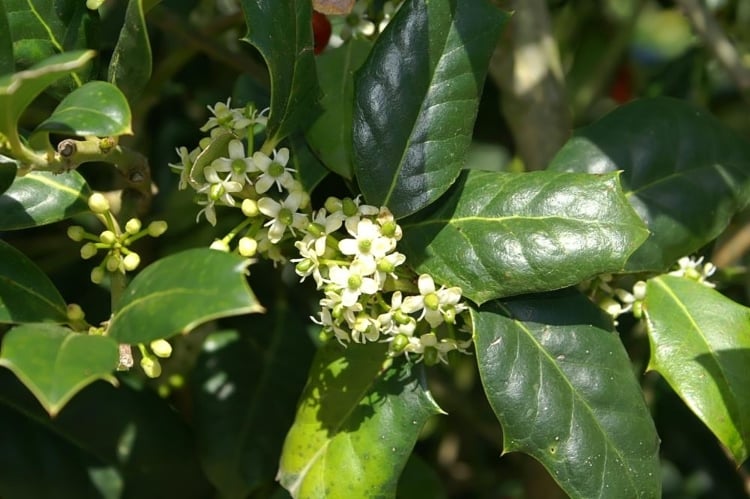
Advantages:
- Reduces noise pollution
- Provides shade
- Evergreen with dark green leaves all year long
- Adds fall color with red berries and spring color with white flowers
- Deer-resistant
- Drought- and salt-tolerant
- Pyramidal shape has dense foliage
- Not bothered by pests/diseases
Growth rate: Moderate to fast. Nellie Stevens holly grows up to 3 feet each year until it reaches a mature height of 20- to 30-feet tall and 10- to 12-feet wide.
USDA Plant Hardiness Zones: 6a through 9b
Best place to plant: Establish these hollies alongside property lines in your front yard that receives full sun or partial shade. Space trees 5 to 6 feet apart in a single row.
3. Southern wax myrtle
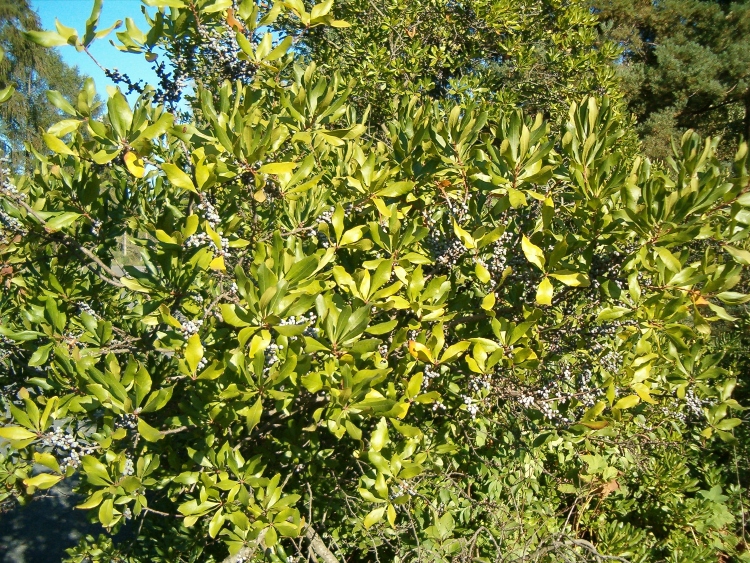
Advantages:
- Drought- and salt-tolerant
- Not bothered by pollution
- Low-maintenance
- Provides shade
- Attracts wildlife with its blue-green berries
Growth rate: Very fast. This broadleaf evergreen tree can grow 5 feet every year. At maturity, the Southern wax myrtle can be 15 to 25 feet high and 20 to 25 feet wide.
USDA Plant Hardiness Zones: 7b to 11
Best place to plant: The wax myrtle’s green leaves and sweet smell help boost curb appeal for front yards. Plant in spots that get full sun or partial shade.
4. Leyland cypress
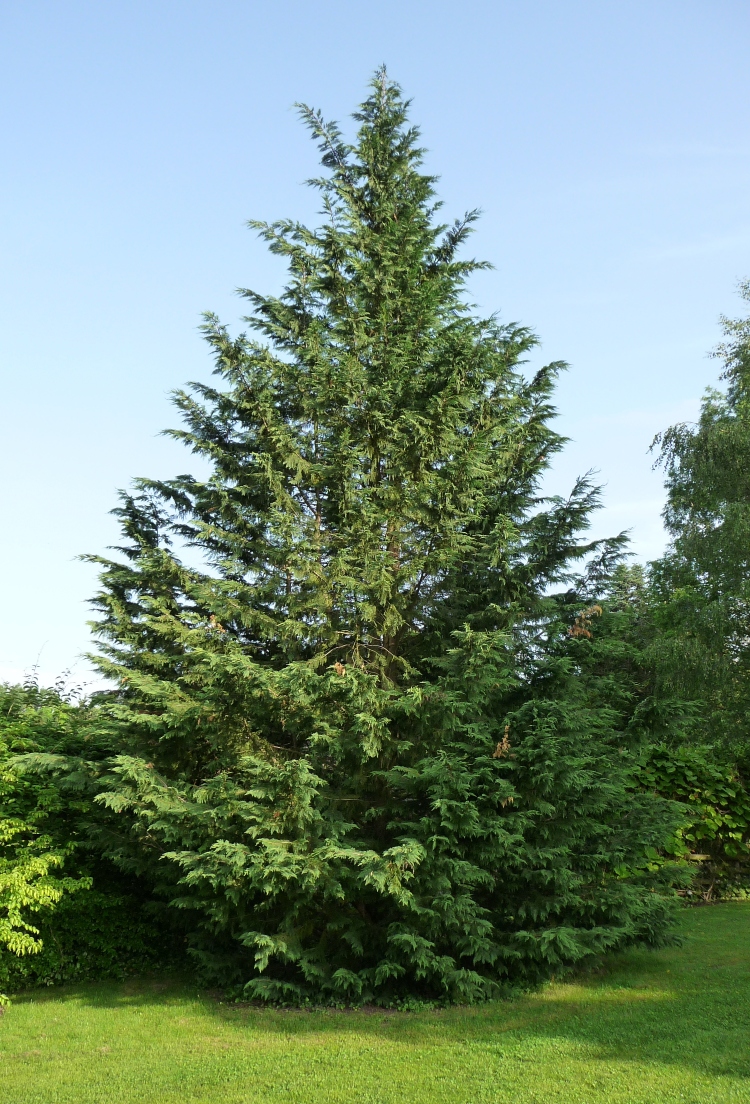
Advantages:
- Salt-tolerant
- Only needs annual pruning
- Dense foliage and pyramidal shape makes a good windbreak
- Thrives in a variety of well-drained soils
- Adds beauty with its scaly, dark green leaves
Growth rate: Fast. This evergreen conifer can grow 3 to 4 feet per year, maturing at a height of 60 to 70 feet and a width of 15 to 25 feet.
USDA Plant Hardiness Zones: 6 to 10
Best place to plant: The Leyland cypress requires full sun and works well in your front yard as a border along property lines. Space 10 to 15 feet apart to hinder disease spread.
5. Japanese yew
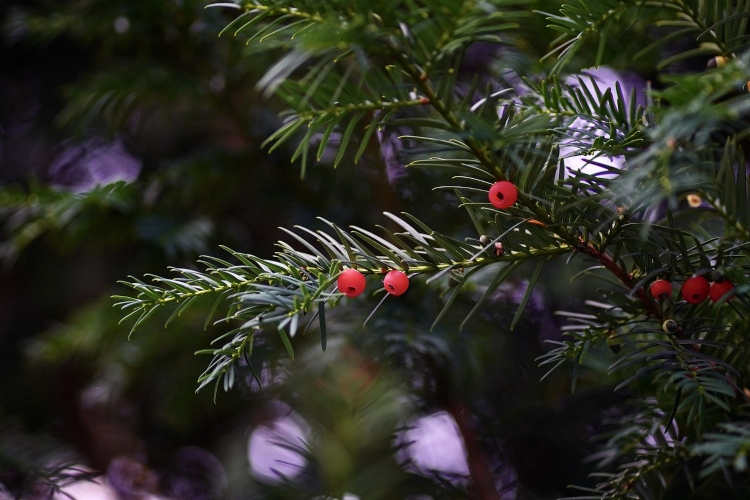
Advantages:
- Low-maintenance
- Grows in full sun, full shade, or partial shade
- Tolerant of drought and rabbits
- Thrives in urban or rural settings
- No serious issues with disease/pests
- The pyramidal shape helps with screening
- Attracts wildlife
- Adds beauty with small red fruit
Growth rate: Slow. Matures at a height of up to 40 feet.
USDA Plant Hardiness Zones: 4 to 7
Best place to plant: This privacy tree works well in the front yard, and it can shield the front of your house from view. Thrives in urban areas, as well. Be sure to plant it in a location sheltered from wind.
6. Eastern red cedar
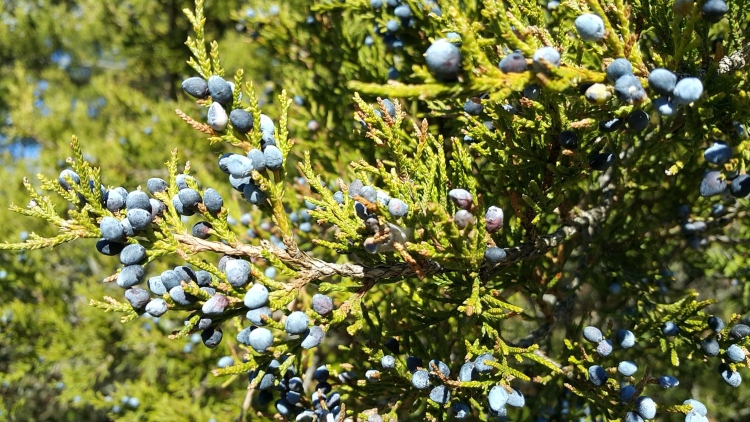
Advantages:
- Resistant to drought; extreme heat, cold, and wind
- Pyramidal with dense foliage works well for privacy
- Salt tolerant
- Deer-resistant
- Attracts wildlife
- Can live up to 500 years
- Great for windbreaks
Growth rate: Medium. Grows 1 to 1.5 feet each growing season and matures at a height of 30- to 40-feet tall.
USDA Plant Hardiness Zones: 4 to 9
Best place to plant: This tree is perfect as a privacy screen along roadways, driveways, and sidewalks, and it grows well in a wide variety of well-drained soils.
7. “Little gem” magnolia
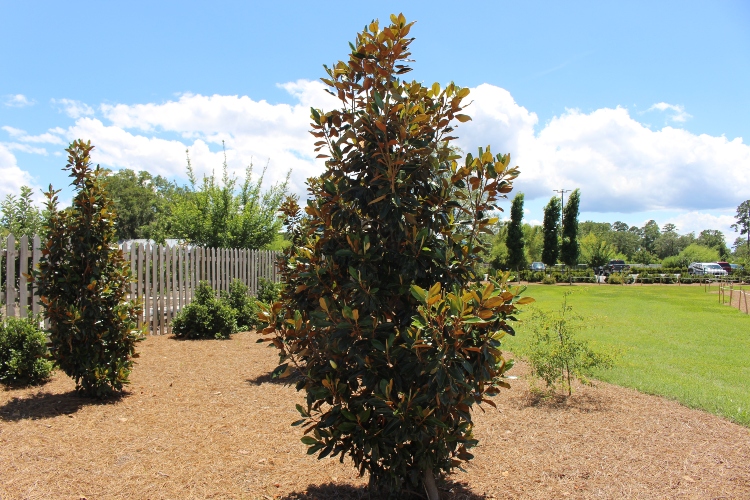
Advantages:
- Pyramidal shape has dense foliage
- Provides shade
- Resistant to deer, pests, and disease
- Tolerant of salt, pollution, drought, and some flooding
- Thrives in many soil conditions
- Adds beauty with white flowers and pleasing scent
- Attracts wildlife
Growth rate: Slow. A smaller version of the Southern magnolia, the “little gem” magnolia adds less than a foot of height each year.
USDA Plant Hardiness Zones: 7 to 10a
Best place to plant: For added curb appeal, plant in the front yard along property lines. Groups of three to five are perfect for privacy and windbreaks; just be sure to space trees 8 to 12 feet apart.
8. Skip cherry laurel
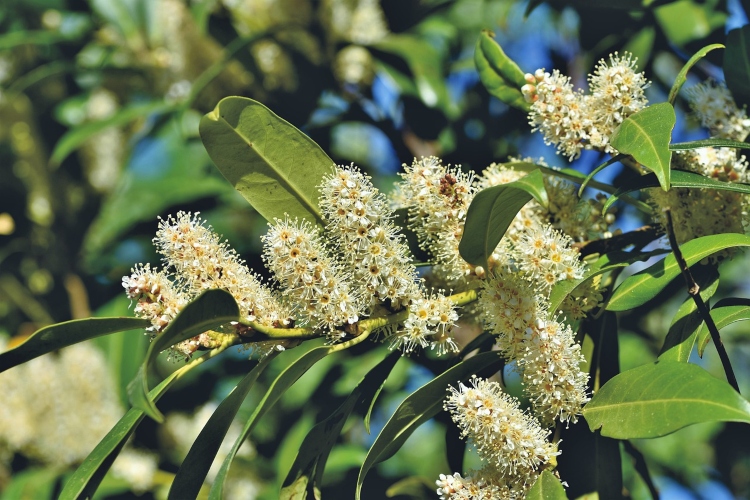
Advantages:
- Low-maintenance
- Great for urban areas
- Thrives in a variety of soil conditions
- No major pest/disease problems
- Tolerant of salt, shade, and drought
- Deer-resistant
- Makes a good windbreak
Growth rate: Moderate to fast-growing; can add 2 to 3 feet of height per year. Matures at height of 10 to 18 feet and width of 5 to 7 feet.
USDA Plant Hardiness Zones: 5b to 9b
Best place to plant: With its short, compact, dense foliage, this small tree works well as a privacy screen for a backyard garden. Skip cherry laurels need full sun, but can also withstand partial shade.
9. Eastern white pine
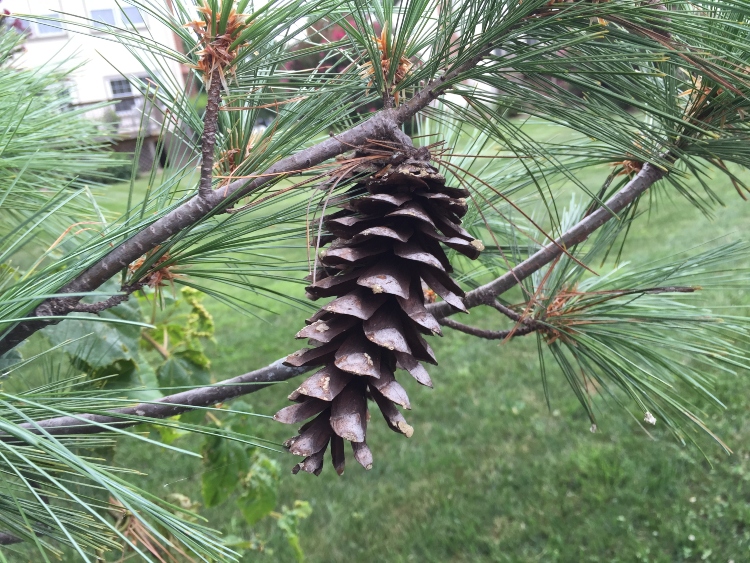
Advantages:
- Large, pyramidal shape perfect as privacy trees or windbreaks
- Blue-green needles add color interest
- Deer-resistant
- Ideal shade tree
Growth rate: Fast; can grow more than 3 feet each year. Matures at a height of 50 to 80 feet tall and 20 to 40 feet wide
USDA Plant Hardiness Zones: 3 to 8
Best place to plant: As this evergreen conifer is an extremely large tree, it’s best to plant it in your backyard where it has plenty of room to grow. Space these trees 20 to 30 feet apart in an area that has full sun or partial shade.
10. North privet
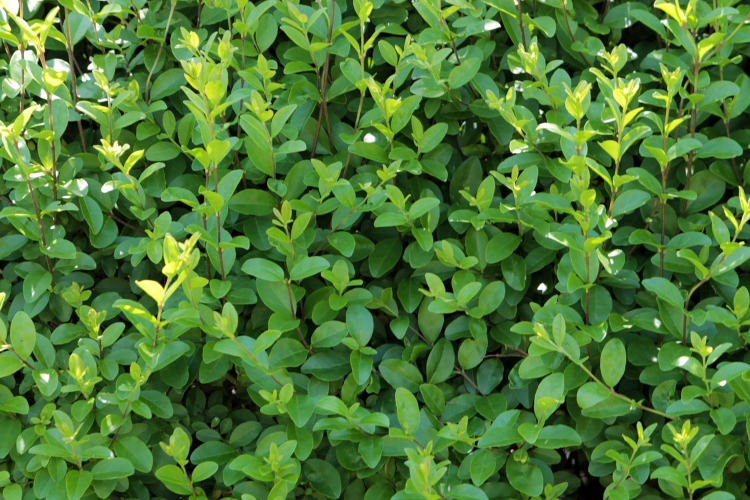
Advantages:
- Does well with shearing; best used as a hedge for privacy or as a windbreak
- Easier to shape than boxwood shrubs
- Pyramidal shape
Growth rate: Fast; can add up to 3 feet a year. Matures at a height of 8 to 12 feet and width of 4 to 6 feet.
USDA Plant Hardiness Zones: 4 to 8
Best place to plant: Plant north privets as a uniform hedge in full sun and partial shade. Space them 24 inches apart to create a living fence that also helps reduce sound. This deciduous tree works well in front yards or backyards.
11. Lombardy poplar
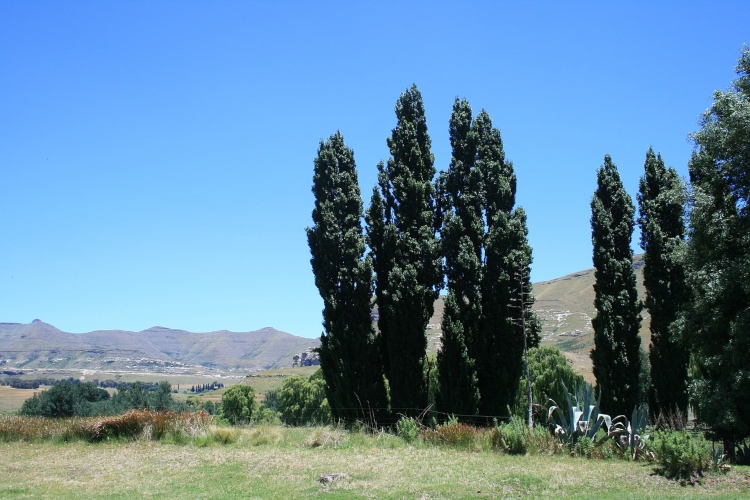
Advantages:
- Bursts of fall color with bright yellow leaves
- Drought- and salt-tolerant
- Works well as a temporary privacy tree and windbreak
Growth rate: Fast; matures to a height of 40 to 60 feet and a width of 10 feet.
USDA Plant Hardiness Zones: 3 to 9
Best place to plant: Plant this deciduous tree along property lines for a nice spring/summer grouping of privacy trees and windbreaks. Cultivate in areas of full sun with well-draining soil.
12. Sky pencil holly
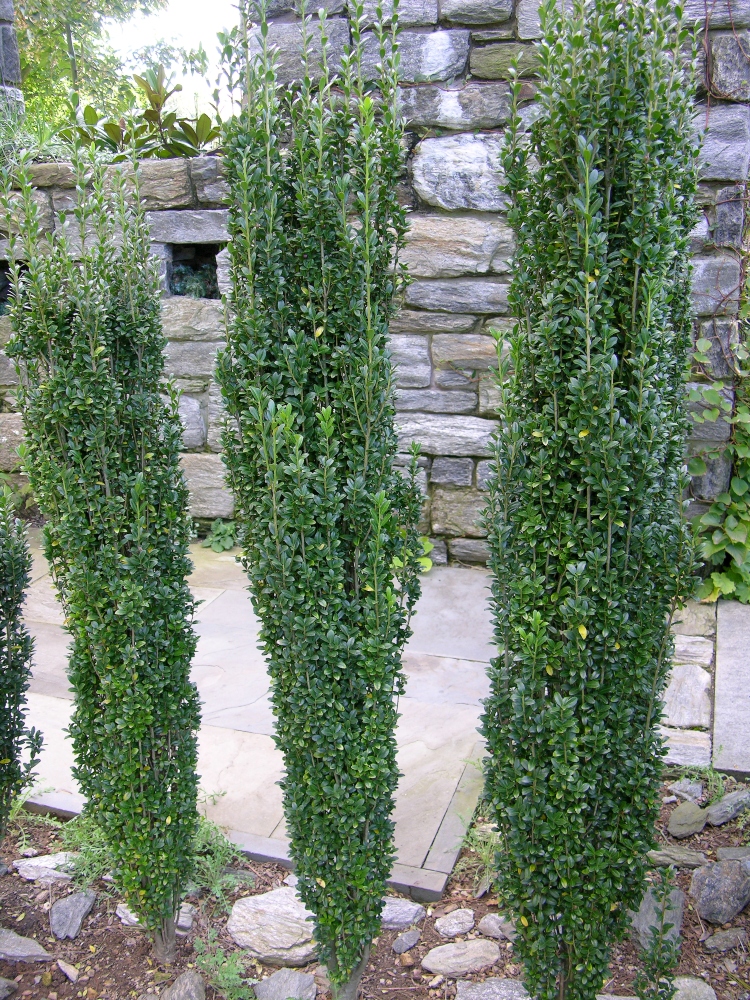
Advantages:
- Ideal for small spaces
- Tolerant of urban areas and different soil conditions
- Low-maintenance
- Columnar shape and dense foliage
Growth rate: Slow. It matures to a height of 8 to 10 feet and a width of less than 2 feet.
USDA Plant Hardiness Zones: 6 to 9
Best place to plant: Plant these hollies close together to create a living fence effect. Locate these trees in your side yard; they’re perfect for disguising HVAC units and other unsightly items you may store there. This evergreen grows well in full sun and partial shade.
13. Japanese false cypress
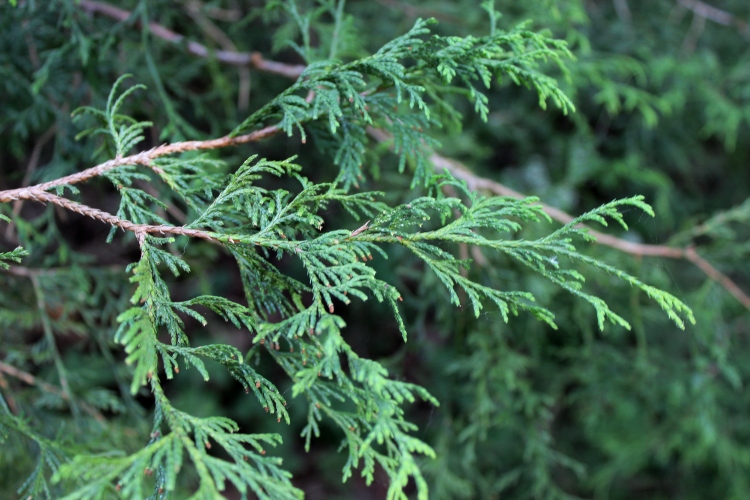
Advantages:
- Drought-tolerant
- Low-maintenance
- Resistant to deer and rabbits
- No major problems with pests/diseases
- Adds color with blue, yellow, or green leaves, depending on the type
Growth rate: Slow. It can grow up to 70 feet tall in the wild; most landscaping cultivars reach up to 20 feet in height.
USDA Plant Hardiness Zones: 4a to 8a
Best place to plant: Plant in areas of full sun or partial shade. These cypresses work well as privacy trees when grouped together in the backyard along property lines.
14. “Emerald green” arborvitae
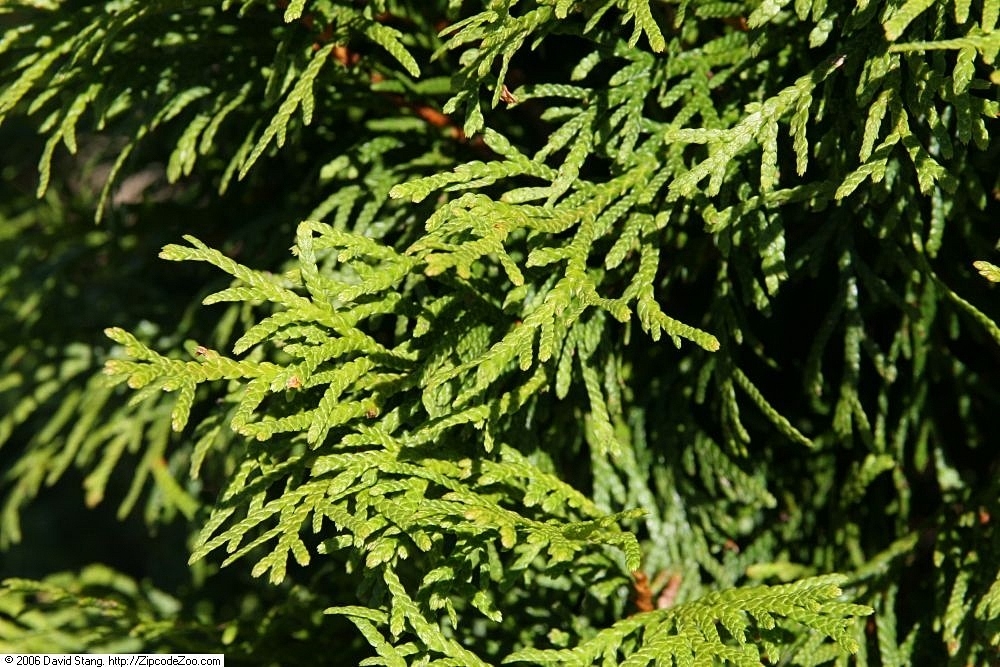
Advantages:
- Drought-resistant
- Tolerates extreme heat and cold
- Thrives in a variety of soil conditions
- No winter discoloration
- Gives off pleasant scent
- Attracts wildlife
Growth rate: Slow. Grows less than 1 foot in a given year. At maturity, this tree can be 10 to 15 feet tall and 3 to 4 feet wide.
USDA Plant Hardiness Zones: 3 to 7
Best place to plant: An ideal privacy screen for the backyard, front yard, or side yard, space trees 2 to 3 feet apart. This arborvitae requires full sun or partial shade.
15. “Spartan” juniper
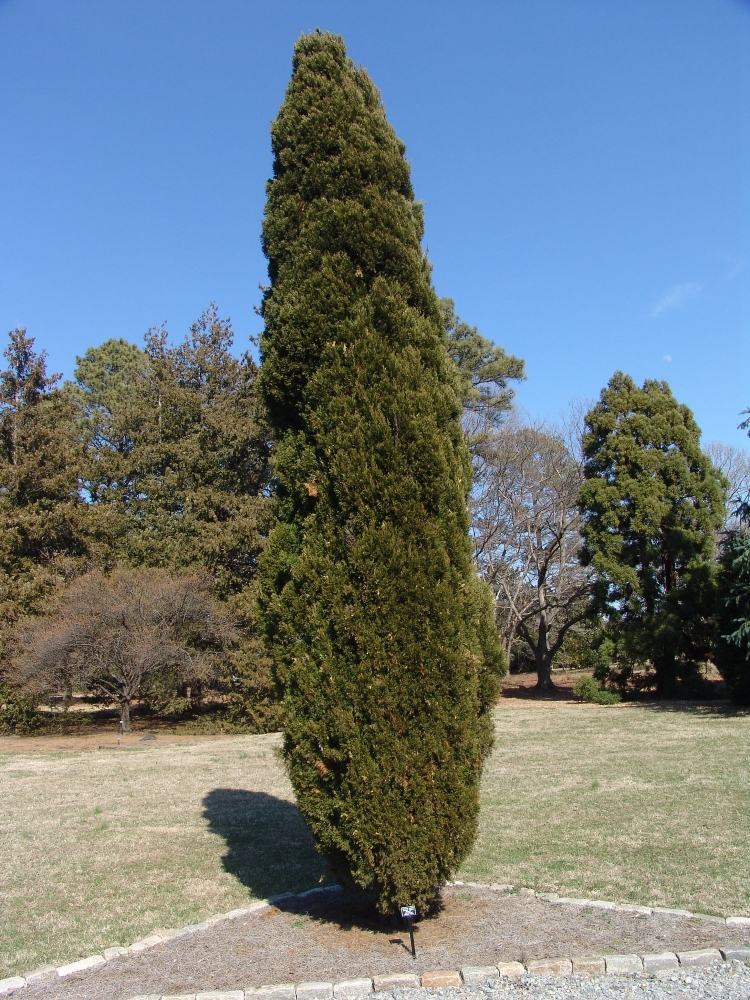
Advantages:
- Pyramidal shape with dark green, dense foliage perfect as privacy screen or windbreak
- No major pest/disease problems
- Low-maintenance
Growth rate: Fast; will ultimately reach a height of up to 20 feet.
USDA Plant Hardiness Zones: 4 to 9
Best place to plant: Plant along property lines in your front yard or create privacy with a line of trees in your backyard. Spartan junipers require full sun and well-drained soil.
Best Trees for Privacy: Other Things to Know
What are the fastest-growing privacy trees?
- “Green Giant” arborvitae
- Nellie Stevens holly
- Southern wax myrtle
- Eastern white pine
- Lombardy poplar
- “Spartan” juniper
- North privet
- Skip cherry laurel
When to Call in the Landscaping Pros
Need help deciding between deciduous trees and evergreens? Not sure which plants to mix in with your privacy trees? Ask a local landscape professional for help. They’ll survey your property and create a custom design plan — one that adds beauty and removes prying eyes.
Main Photo Credit: Unsplash
